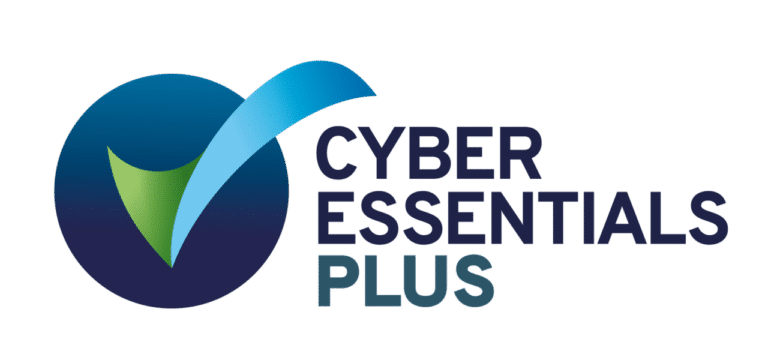In an environment that is complex, rapidly evolving and often ambiguous, it is crucial to have a legal team that is confident with the direction they are heading in and has clarity on what needs to be done to achieve success.
A well-defined and communicated legal department strategy is important because it aligns the legal department’s goals and objectives with the company’s overall strategy, ensuring efficient resource allocation, precise management of legal risks, enhanced stakeholder relationships, and promotes continuous improvement. It ultimately helps the legal department deliver value to the organisation and contributes to its overall success.
While developing a legal department strategy can be overwhelming, in this article, we seek to provide practical steps to get you started, along with a ready-to-download PowerPoint template.
Understand the current state
To successfully develop a strategy for a high-performing legal department, it is crucial to conduct an audit and gain a comprehensive understanding of the current state of the legal function from both financial and non-financial perspectives. This requires gathering relevant information and data from the internal team, internal business stakeholders and the extended legal function – your law firms.
Financial and spend data is a great place to start, and it is essential to review current and historical legal spend, including all legal fees, split by law firm, jurisdictions, type of work, and internal source of work (e.g., business unit or department). While some organisations may have this data readily available, others may need to involve their procurement or finance teams. Keep in mind that legal fees may sometimes be concealed in other business functions’ cost centres. Requesting invoice data from all law firms working for the organisation, including the legal department and other parts of the business, is an excellent way to cross-reference legal spend.
The results of this financial analysis may be surprising and could uncover several areas that require immediate attention, including:
- Unexpected internal stakeholders briefing law firms directly
- Non-vetted law firms engaged
- Outdated and inaccurate information held by law firms
- Significant variation between expected and actual spend
- Trends arising from specific departments and their use of legal resources
- Poorly managed matters, or duplication of work
After reviewing the financial situation, it is necessary to gather qualitative non-financial information from the legal team and internal stakeholders. This can be accomplished informally through anecdotal conversations and more formally through structured meetings and surveys. This process is critical as it can uncover areas for immediate improvement, highlight critical risk factors, or identify opportunities for greater stakeholder engagement.
Insights gained from this stage may reveal:
- Certain business units that hold tightly to their existing law firm relationships
- Law firms that do not consistently provide estimates before commencing work
- Misaligned law firm relationships
- Busy legal team members who do not seek competitive quotes
- The same type of routine or repeatable work being assigned to different firms
- Failure to adhere to approval processes
- Lack of confidence among internal stakeholders that value for money is being obtained
- Lack of availability of metrics and reports.
One way to synthesise and prioritise these financial and non-financial insights is to conduct a workshop with the legal team, where each insight is captured on a single post-it note. Then similar findings are grouped into “themes” on a wall, whiteboard or digital collaboration space. Prioritising these “themes” will help inform the next step of developing a strategy.
Tip: Use Lawcadia’s Strategic Planning for In-House Legal Teams template as a starting point
Following this exercise, it can also be helpful to summarise the current state with a SWOT analysis. This strategic framework is used to identify strengths (what you are good at and want to maintain), weaknesses (areas to address), opportunities (new approaches or industry drivers that could make a difference), and threats (environmental factors that could impact your success). Typically, strengths and weaknesses relate to the internal environment, while opportunities and threats refer to the external environment.
With all of this information in hand, you are now ready to move on to developing a strategy for your legal department.
Develop a strategy
Having distilled and clarified your current state, you will have a very good understanding of ‘where you are now’. Now you are ready to consider ‘where you want to be’– in one, two or three years. Future plans for the legal department must also align with your overall organisation goals, so ensure you are familiar with what the business is trying to achieve and its underlying drivers and values.
If you are still trying to figure out where to start or want to garner team buy-in and team building, conduct a mini-workshop with your legal team to brainstorm ideas on overcoming the identified weaknesses, taking advantage of the strengths and opportunities, and managing possible threats. Your in-house lawyer colleagues in other companies can also be a helpful resource, so find out what works for them and how they are overcoming challenges.
Once you know where you are now and have defined where you want to be in the future, it is time to identify and prepare a roadmap for how you will get there. Ultimately, the output is to prepare a strategy document that is focused, easy to communicate to internal stakeholders, and includes key initiatives, measurable objectives, and milestones.
Communicate with stakeholders
Effective communication with internal and external stakeholders is critical to developing a successful legal department strategy. As the General Counsel or team leader, it is your responsibility to take a leadership role in maintaining open lines of communication.
To ensure transparency and accountability, keeping your CEO and CFO informed about your strategy, approach, and progress is important. They value data and reports, so having dashboards highlighting key issues and financial implications is beneficial. This will instil confidence that you have a process in place to demonstrate that you are spending the organisation’s money wisely and are aligned with their strategic goals.
Your legal team is your greatest asset and will significantly impact your strategy’s success. Therefore, it is essential to communicate frequently with them about your goals, expectations, and what success looks like. Share progress, concerns, and ideas for improvement.
Law firms also crave information and communication to develop and maintain important strategic relationships. Regularly share metrics and feedback with them and invite their input on how they can help you achieve your goals.
In addition, it is essential to communicate and manage change with other senior management within the organisation, such as heads of departments or business units. Be transparent about your goals and why you are making changes. Engage them in the process, as they will also play a critical role in achieving success.
Conclusion
A well-defined and communicated legal department strategy is crucial for achieving success, managing legal risks, enhancing stakeholder relationships, promoting continuous improvement, and ultimately delivering value to the organisation. To develop a successful strategy, it is essential to understand the current state of the legal function from a financial and non-financial perspective. Gathering relevant data and insights, conducting a SWOT analysis, and conducting brainstorming sessions with the legal team can provide a roadmap for developing a strategy document with measurable objectives and milestones. Effective communication with both internal and external stakeholders is critical to the success of the legal department strategy, and maintaining open lines of communication is essential for transparency and accountability.
Download the Strategic Planning for In-House Legal Teams template to get started.

Is spend management a priority? Check out our Best Practice Guide: The 8 Principles of Effective Outside Counsel Management.


